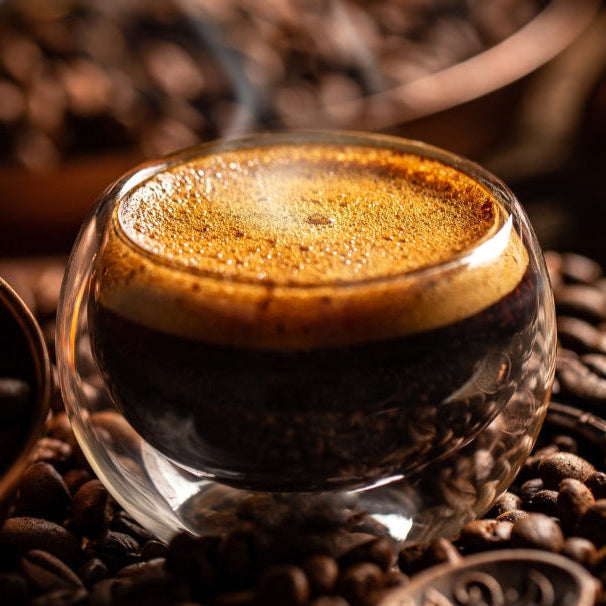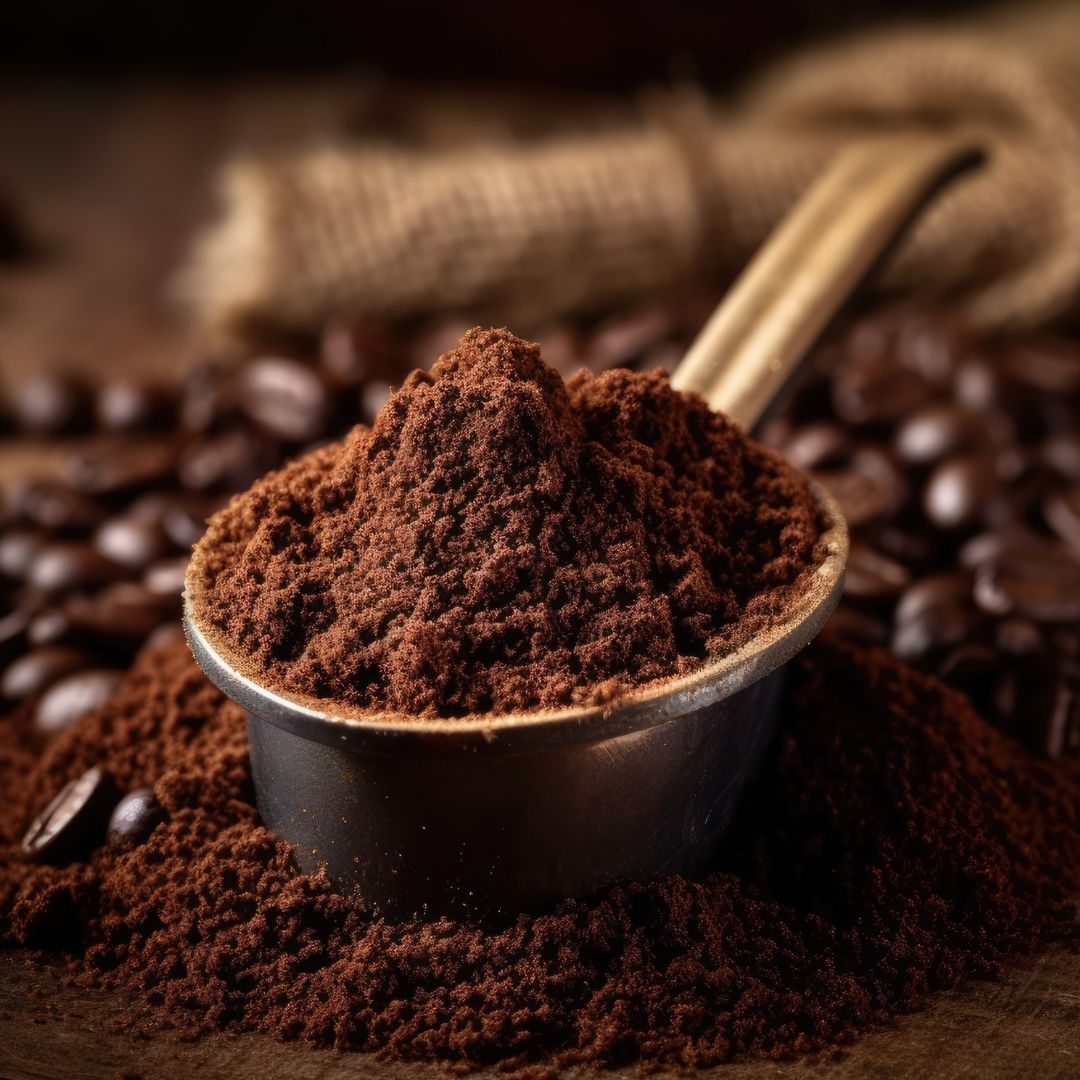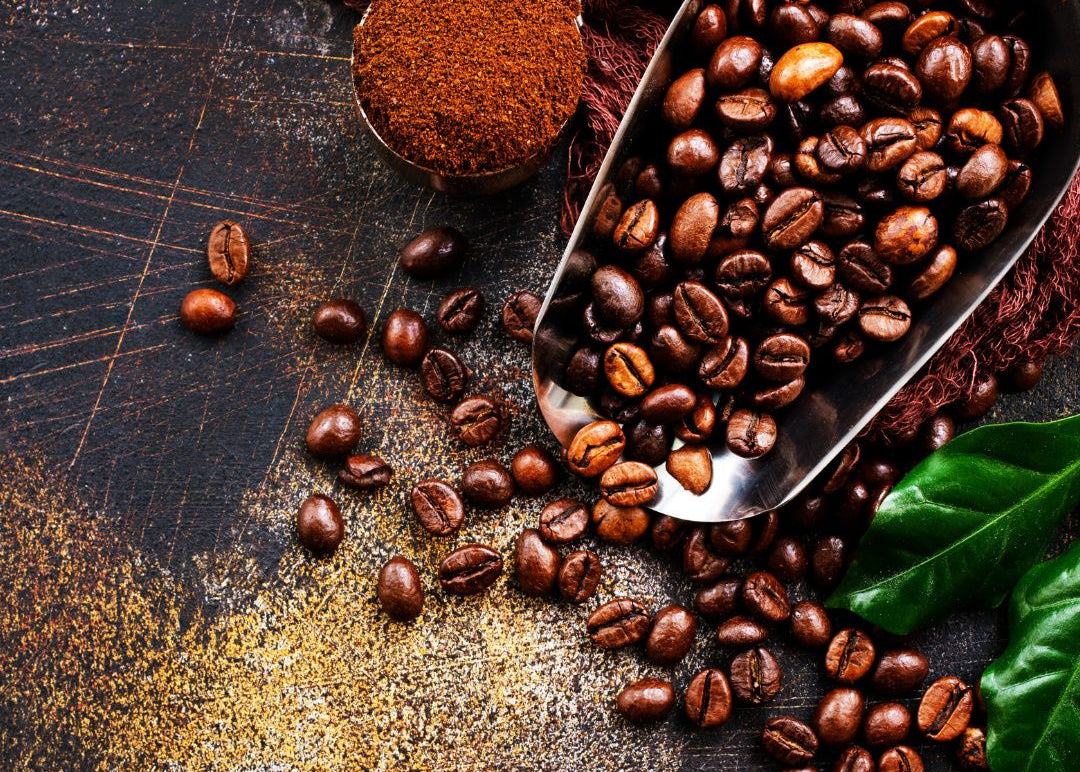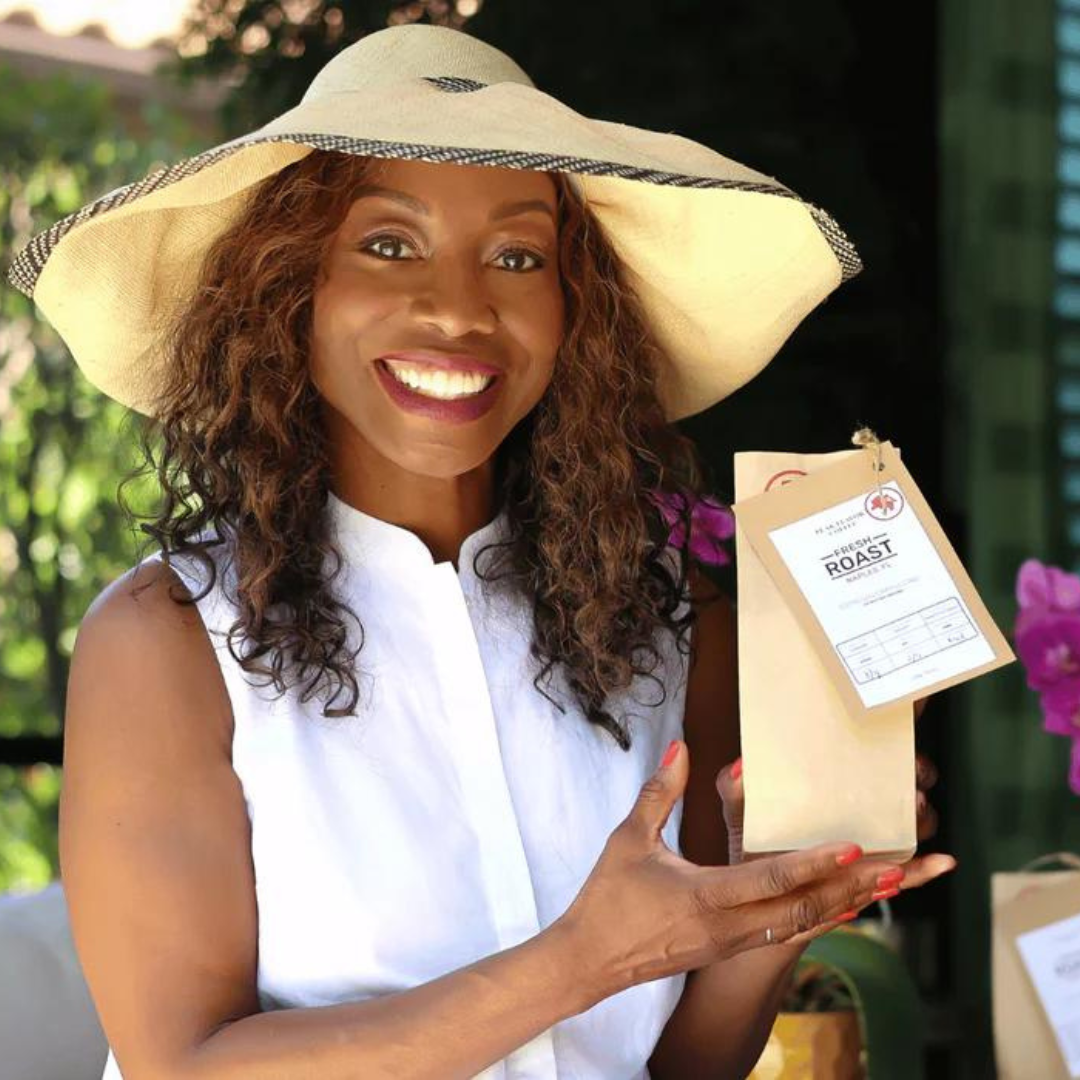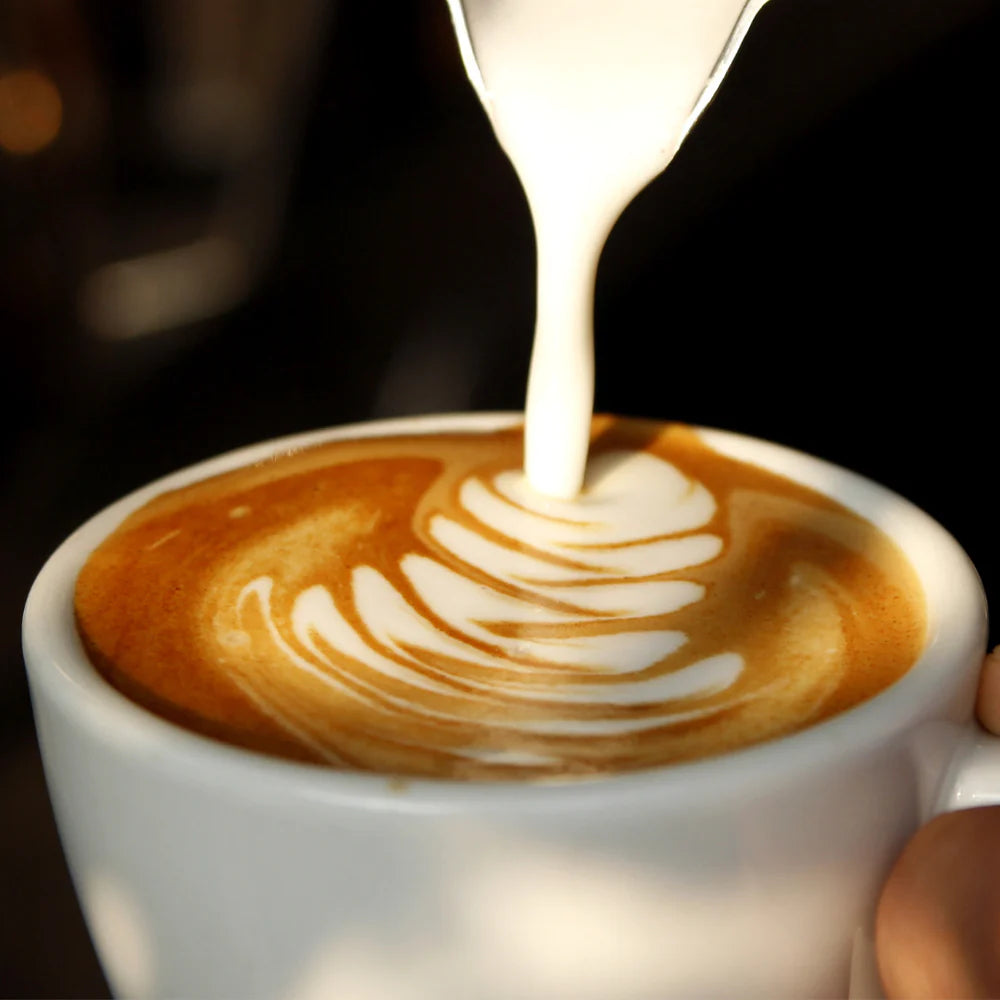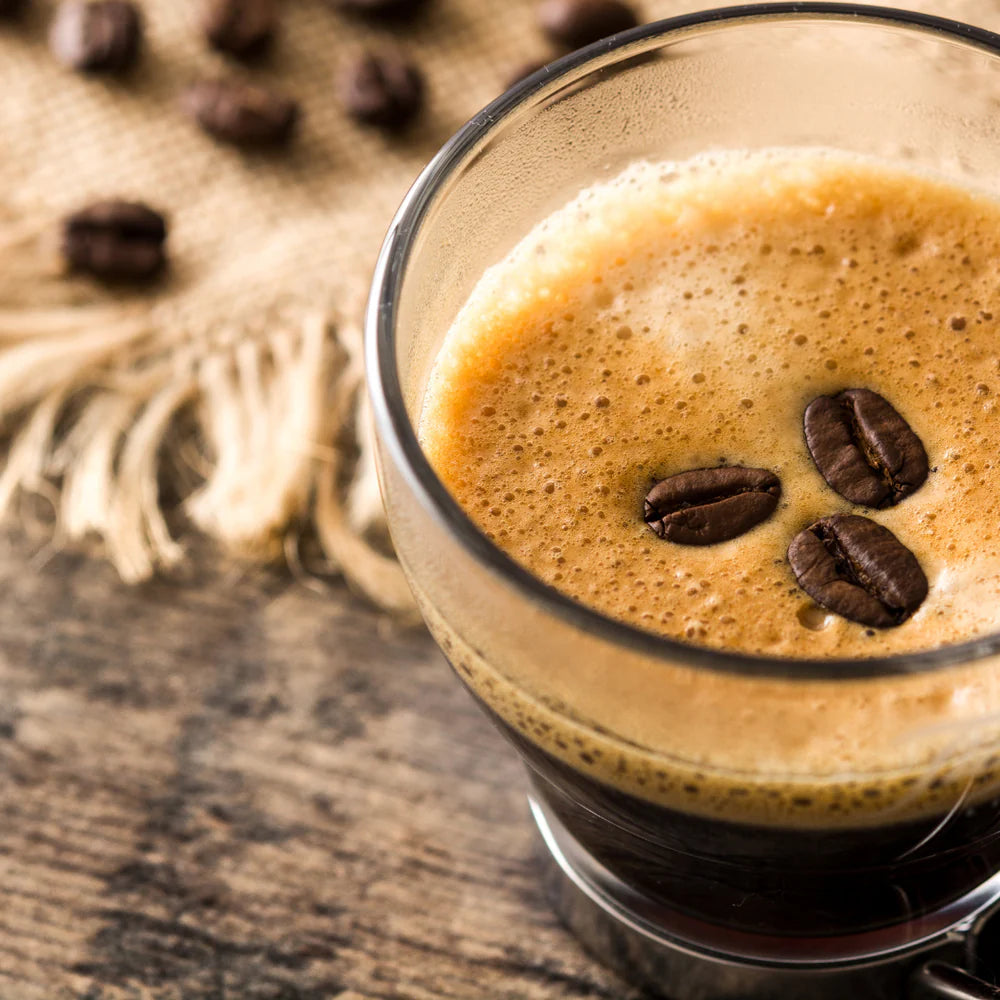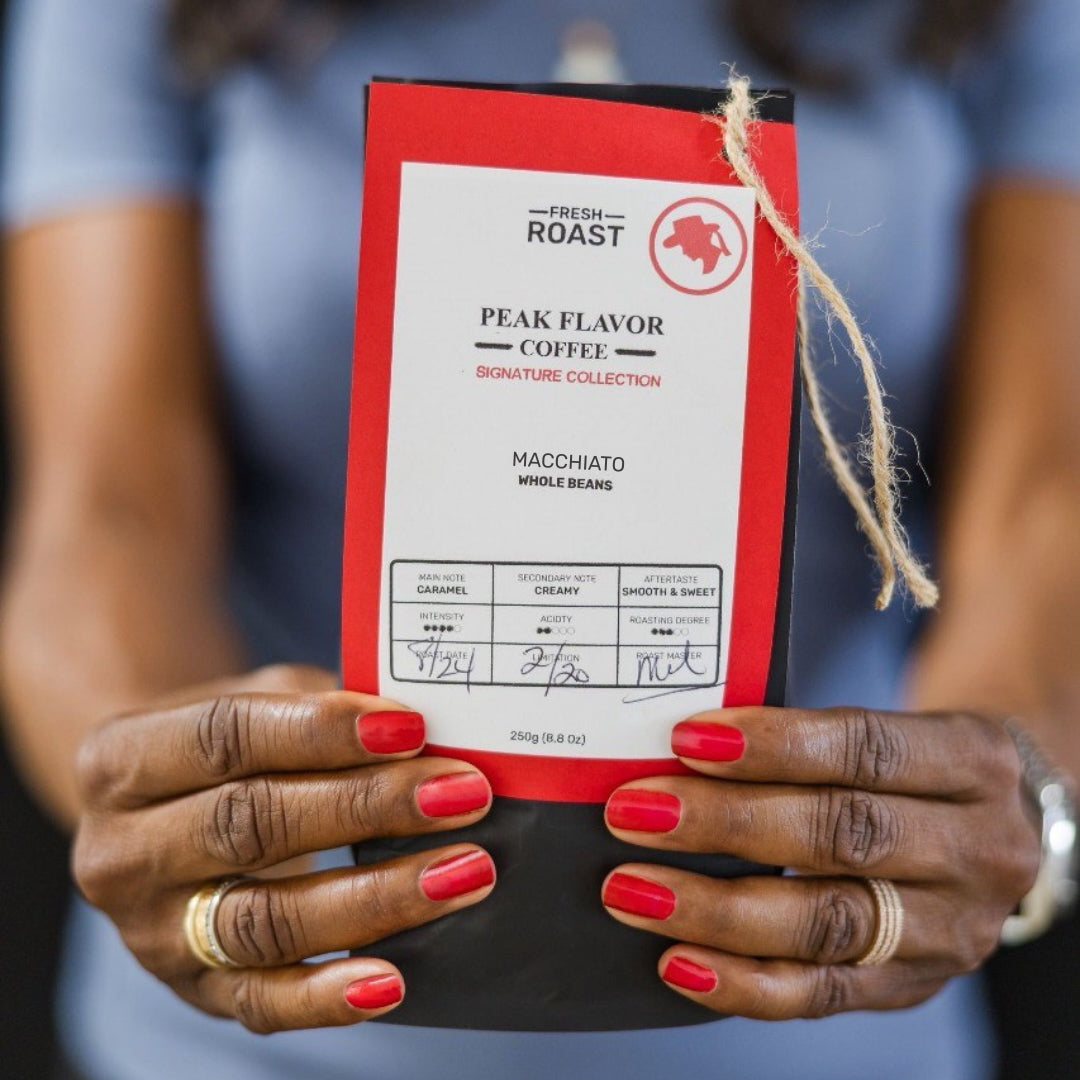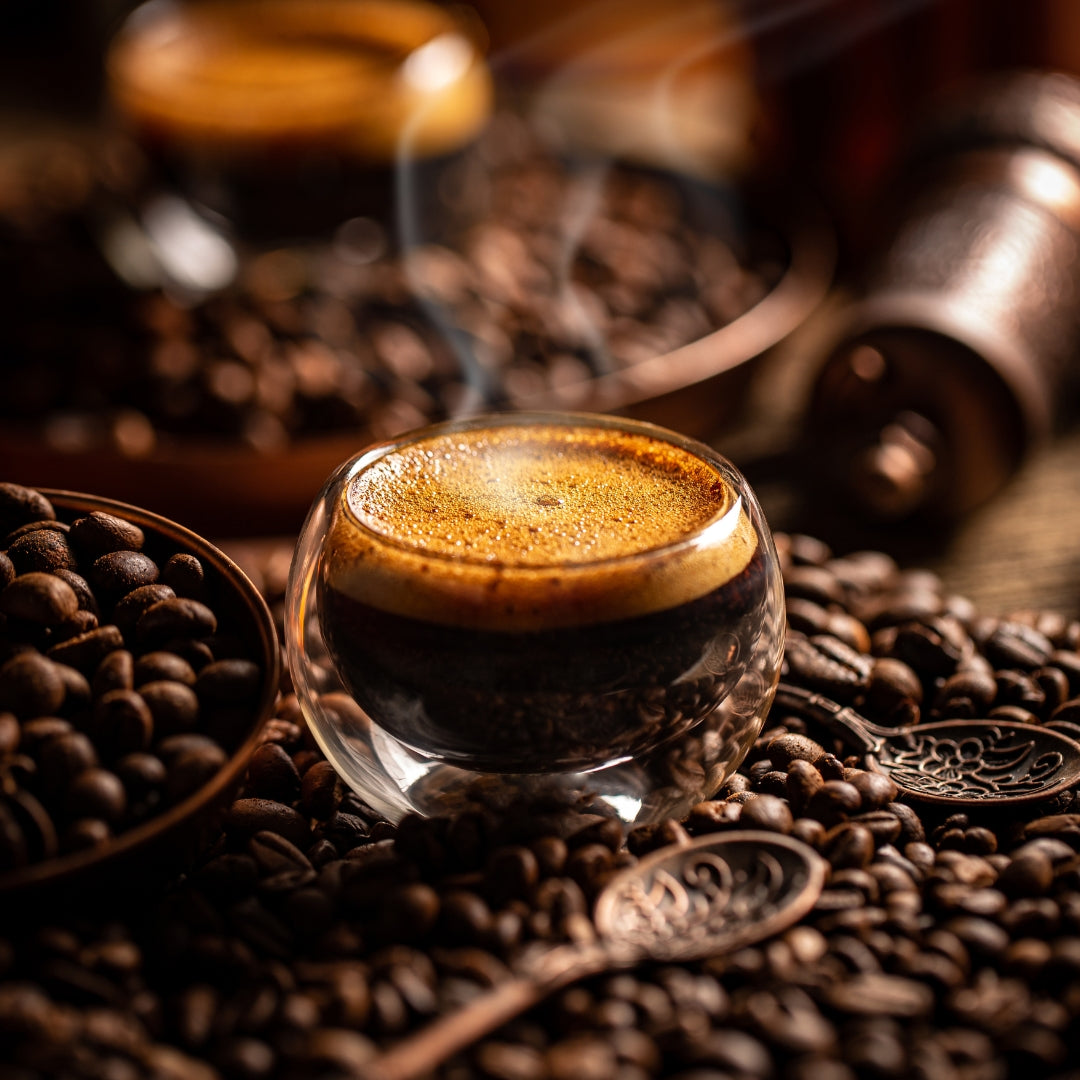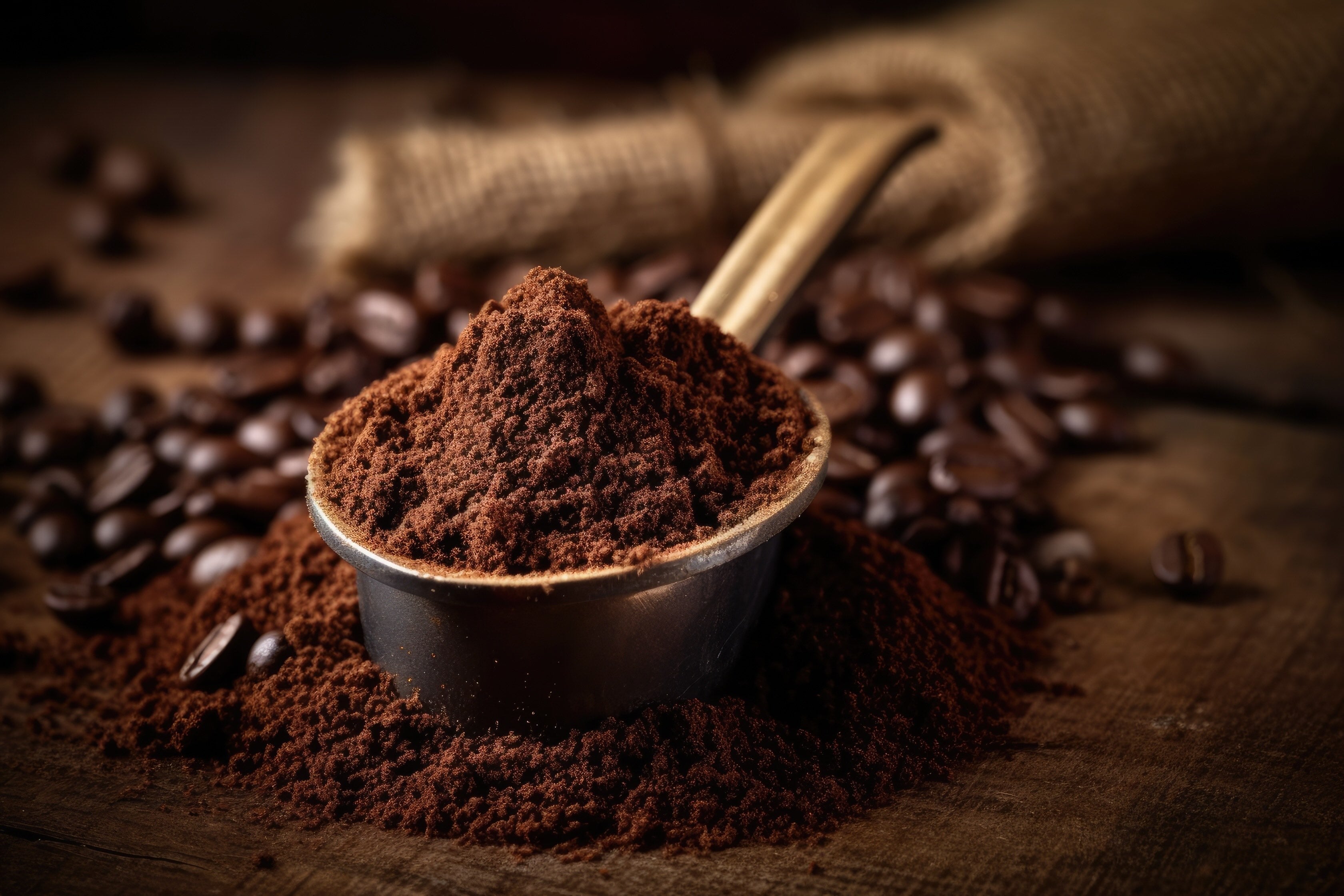What is Peak Flavor Coffee?
Eight Days to Delicious: The Peak Flavor Coffee Playbook
Italian Coffee wisdom meets kitchen-friendly science—learn why Fresh Roasted Coffee peaks around day eight, how to dial your Home Coffee, and when Coffee Grounds go from magic to meh.
The Short Version
Peak Flavor Coffee is the moment your coffee tastes the most balanced and aromatic—when the lively aromatics (the smells) and the heavyweight taste contributors (the flavor oils) are in harmony. Chemically, it’s where volatile compounds (the delicate, great-smelling stuff) and non-volatile compounds (the body, sweetness, and pleasant bitterness) are present in just-right amounts—and before staling steals the show.
Why Flavor Peaks Days After Roasting?
Right after roasting, beans are full of CO₂ or carbon dioxide That gas protects some aromas from oxygen (yay!) but also interferes with extraction (boo!). As time progresses, CO₂ gently escapes and the water in your coffee maker can finally reach all the tasty stuff—and you land in the “wow” zone.
Scientists measure this by tracking gas release from whole beans and grounds over time. Most of this "degassing" takes place in the first 7 days after roasting, which is why so many coffees taste their best somewhere around days 7–14. Read more about degassing of roasted coffee.
Roast style matters, too. Different roast profiles lock in different amounts of CO₂ (and release it at different speeds), which is one reason espresso blends often peak later than filter roasts. Compared to fast industrial roasts, slow medium-dark roasts require a slightly longer wait until degassing is completed. Read more about roasting and degassing.
Translation for home brewers: If your freshly roasted bag tastes a touch wild or sharp on Day 1–2, don’t panic. Let it breathe and try again on Day 7–10. That’s Peak Flavor’s neighborhood. Read more about the shelflife of fresh roasted coffee.
Roasting: Where Natural Caramel and “Delicious” Are Born
During roasting, two big molecule reaction families make your Fresh Roasted Coffee taste like, well, great:
Maillard reactions—sugars and amino acids hold hands and turn into nutty pyrazines and rich melanoidins (the brown color molecules that also thicken body).
Caramelization—sucrose breaks down into sweet, toffee-like, delicious compounds.
The headline of the science behind coffee roasting? Balanced development builds the “brown-sugar, caramel” core that so many of us love. Overdo it and you tip into ashy phenols; underdo it and your cup reads grassy or lemony. For coffee lovers (or nerds like me), here is a good link to learn more about coffee flavor formation.
Extraction: How You Coax Peak Flavor Out of the Grounds
On brew day, your water’s job is to dissolve the right amount of soluble goodness—not too little (sour, thin), not too much (bitter, drying). The "brewing control chart" shows how brew strength (TDS) and extraction yield affect coffee taste.
Many experts aim for a sweet spot on this chart. Newer research has updated that chart with real consumer liking and modern sensory data, but the gist remains: a balanced extraction tastes best. And the easiest way to land into that coffee sweet spot, where you extract maximum flavor from your coffee grounds depends on grind size accuracy and grind size uniformity.
Translation: To brew peak flavor, use a grind size that precisely fits your brewing method and ensure that almost all (98%) of those coffee grounds have the same size. Have a look at below chart to see how grind size uniformity leads to more flavor.

The Villain of the Coffee Story: Staling
Once beans are roasted, oxygen wants in. Lipid oxidation products and the loss of delicate aromatics push flavor from “fresh and vibrant” toward “flat and cardboardy.”
Studies tracking these markers—and the sensory changes they bring—confirm that storage time and exposure to air are the enemies of Peak Flavor. Which brings us back to that sad supermarket bag that’s 100+ days post-roast.
How to Brew Peak Flavor at Home?
(without a PhD or a new mortgage)
Whether you’re team espresso, pour-over, or French press, here are the some most important steps to nudge your Home Coffee into Peak Flavor territory:
Start with Fresh Roasted Coffee: Look for a roast date, not a “best by.” As a rule of thumb, Filter brews often shine on day 5-10 post-roast. Espresso requires a little more more rest after roasting. Brewing by day 7–14 is common.
Buy whole beans and grind only what you need right before brewing. Grinding accelerates oxidation and aromatic loss—think sliced apples browning. Keep Coffee Grounds for last-minute emergencies or use reusable k cups with fresh roasted coffee grounds. Alternatively, invest in a good burr grinder and you’ll taste the upgrade immediately.
Match your grind to your brew method - easily the most overlooked way to easily improve home coffee taste. Allow me to explain:
For Espresso: Use extra fine grinds (300 microns) with 98% grind size consistency. Without a professional burr grinder, it's impossible to get this level of grind size accuracy or uniformity. Instead, let us grind espresso for you.
For Pour-over coffee with a metal mesh filter: Use medium-fine pour over grinds (850 microns). For paper coffee filters or drip coffee, use a finer grind (750 microns). Like with any grinds, grind size uniformity needs to be near perfect to avoid bitterness.
For French press, use medium-coarse grounds (1050 microns) and don’t plunge immediately; skim and decant for a cleaner cup.
Remember: you’re adjusting extraction, not just the clock. If it’s sour and thin, grind finer; if it’s bitter and astringent, grind coarser.
What Peak Flavor tastes like?
(and how you know you’re there)
It's hard to describe Peak Flavor Coffee - but you know it when you taste it:
Aroma: pronounced and specific (chocolate, caramel, citrus, florals).
Taste: sweetness shows up, acidity is lively not sharp, bitterness is pleasant not aggressive.
Mouthfeel: round and satisfying; for espresso, heavy crema appears on top and persists.
Aftertaste: clean and moreish—you want another sip.
If you cup the same coffee on Days 1, 5, 8, and 14, you’ll often notice a shift from gassy/sharp → sweet, balanced, expressive → then a slow decline as aromas fade. The exact timing varies by roast, bean density, and processing, but the shape of the curve is remarkably consistent: flavor maxes out on day 7-10 after roasting.
Have a look at this grph to understand how flavor develops on the days after roasting.

Ready for Peak Flavor Coffee?
At Peak Flavor Coffee, we design every roast to arrive at your door near its “ready” window, not a week before or a month after. Our house profiles are roasted for a sweet caramel flavor, full body and clarity. They are rested just long enough and ground accurately, so your first Morning Coffee hits the spot. You will enjoy a full aroma, balanced acidity, and a smooth body.
Because yes, coffee is chemistry. But it’s also comfort, ritual, and a small daily joy. When you hit Peak Flavor, the joy is bigger. And the coffee will revitalize your body and sharpen your mind.
If you’ve read this far, your taste buds are 90% of the way there. The last 10% is easy: Find your coffee (we’ll nudge you toward the right style for your setup). Brew it with your favorite coffee maker by using the tips above.
Explore Peak Flavor Coffee → we roast to order so the peak happens in your kitchen, not in a warehouse. Your new favorite cup is about eight days away.
Coffee Hugs,

